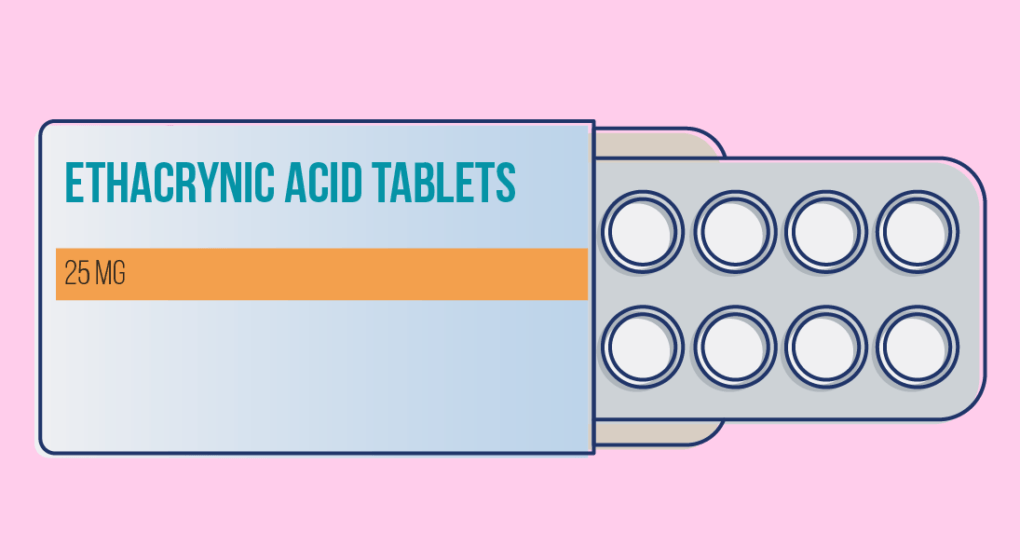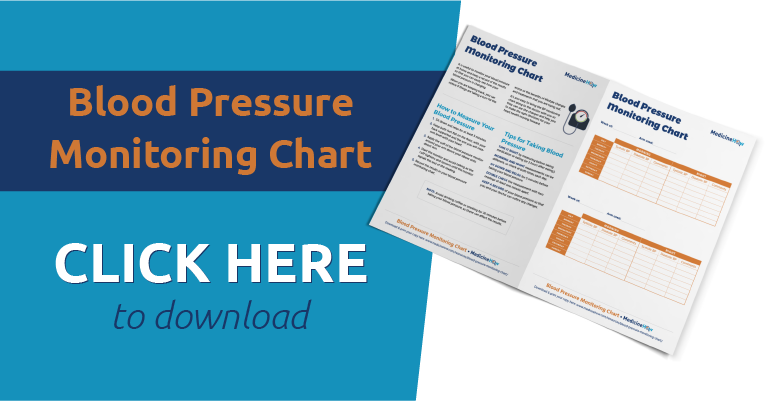
Ethacrynic acid is a type of drug called a loop diuretic, which changes the way your kidneys function to produce and excrete a greater quantity of urine. This is useful when we want to reduce the volume of fluid in your body, such as if you have fluid build-up and swelling, which are symptoms of several common health conditions.
If you or someone you know is taking ethacrynic acid and you’d like to know more about how it works, this article should help you to understand the basics.
Brand Names and Doses
![]() Ethacrynic acid is the generic name of the drug, which is the name of the active ingredient inside the medication. You might also know it by the brand name written on the packaging, such as Edecrin, which is the name given by the manufacturing company.
Ethacrynic acid is the generic name of the drug, which is the name of the active ingredient inside the medication. You might also know it by the brand name written on the packaging, such as Edecrin, which is the name given by the manufacturing company.
There is currently only one dose of Edecrin available: 25 mg tablets. The standard dose is from 2 to 8 tablets (50-200 mg) each day, in one or two separate doses.
As Ethacrynic acid is designed to make you urinate more often, it is best to take it in the morning because it will be easier for you to reach a toilet in this time. On the other hand, if you take it before bedtime, you may need to get up several times during the night to relieve yourself.

What type of drug is it?
![]() Ethacrynic acid is a type of drug called a loop diuretic. This is a class of medications that work in a similar way in the body. Other drugs in the same class are:
Ethacrynic acid is a type of drug called a loop diuretic. This is a class of medications that work in a similar way in the body. Other drugs in the same class are:
Unlike frusemide, ethacrynic acid is only available in an oral formulation (not IV). It can be a good alternative if you have experienced a rash or allergic reaction to frusemide or bumetanide. However, it is more likely than other loop diuretic drugs to cause side effects such as ototoxicity.
What is ethacrynic acid used for?
![]() Ethacrynic acid is commonly used if you have edema, which is swelling or pooling of fluid in areas of your body such as your feet and ankles.
Ethacrynic acid is commonly used if you have edema, which is swelling or pooling of fluid in areas of your body such as your feet and ankles.
Edema is a symptom of several different health conditions including:
- Heart failure
- Hepatic cirrhosis
- Renal impairment
- Nephrotic syndrome
If you have any of these conditions and notice swelling in your feet or other areas of your body, your doctor may recommend ethacrynic acid to drain the fluid and reduce the swelling.
How does ethacrynic acid work?
![]() Ethacrynic acid works by changing the way that urine is produced in your kidneys, leading to an increased production of urine.
Ethacrynic acid works by changing the way that urine is produced in your kidneys, leading to an increased production of urine.
Usually, your blood is filtered into your kidneys and goes through a series of tubes where different components are reabsorbed back into the bloodstream or continue to be excreted in the urine. One of these tubes is called the “loop of Henle” and it is this area of the nephrons in the kidneys that is altered.
When you take ethacrynic acid, it stops the sodium and chloride ions from being reabsorbed into the blood stream as they usually would. As a result, more of these ions is excreted in the urine, along with more water (water follows the salts to balance the concentration).
It is a potent diuretic and causes a significant increase in the excretion of urine because it is in the loop of Henle that most of the sodium is usually reabsorbed.
Side Effects
![]() The most common side effects of ethacrynic acid are related to an imbalance of salts in your blood, which occur because of the changes in the salts that are excreted in the urine. You may have:
The most common side effects of ethacrynic acid are related to an imbalance of salts in your blood, which occur because of the changes in the salts that are excreted in the urine. You may have:
- Low sodium levels (hyponatremia)
- Low potassium levels (hyponatremia)
- Low magnesium levels (hypomagnesia)
- High uric acid levels (hyperuricemia)
You may feel dehydrated, dizzy, nauseous, or have episodes of gout or low blood pressure. You may need regularly blood tests to keep an eye on the concentration of electrolytes in your blood.
If you notice these signs, it is likely that the dose of ethacrynic acid is too high. It is best for you to discuss this with you doctor, who will help you to find the right dose.
Cautions
![]() Ethacrynic acid is not the best choice for every patient and there are some people who should avoid taking this drug. Your doctor may opt for a different drug if you:
Ethacrynic acid is not the best choice for every patient and there are some people who should avoid taking this drug. Your doctor may opt for a different drug if you:
- Are allergic to ethacrynic acid
- Are affected by prostatic obstruction (may cause acute urinary retention)
- Suffer from gout (may precipitate an attack)
Additionally, ethacrynic acid is contraindicated and should bot be used if you are severely dehydrated or have an imbalance of electrolytes in your blood, as it can worsen this.
If you have poor renal function, you are more likely to be affected by side effects such as ototoxicity and another drug may be a better option for you.
Interactions
![]() Ethacrynic acid may interact with some other medications that you are taking. In particular, it can cause problems when used with other medications that affect the levels of potassium in the blood because the risk of hypokalemia is higher. These medications include:
Ethacrynic acid may interact with some other medications that you are taking. In particular, it can cause problems when used with other medications that affect the levels of potassium in the blood because the risk of hypokalemia is higher. These medications include:
- ACE inhibitors
- Lithium
- NSAIDS
- Sartans
- Thiazide diuretics
Make sure that your doctor knows if you are taking any of these drugs (particularly NSAIDS such as ibuprofen or aspirin that can be bought over-the-counter in a pharmacy or supermarket) so that they can change the dose as needed.

Pregnancy and Breastfeeding
![]() Ethacrynic acid is not usually used for women who are pregnant, as changes in the electrolytes in the blood could directly affect your child and there is a risk of neonatal thrombocytopenia. However, your doctor may recommend it in rare circumstances.
Ethacrynic acid is not usually used for women who are pregnant, as changes in the electrolytes in the blood could directly affect your child and there is a risk of neonatal thrombocytopenia. However, your doctor may recommend it in rare circumstances.
If you are taking ethacrynic acid and trying to conceive, it is best to talk to your doctor about your medication options.
There is little research about the use of ethacrynic acid for women who are breastfeeding, so we don’t know how safe it is. It is sometimes used, but it is important to monitor for signs in your baby to take action if needed.
Pin it!


